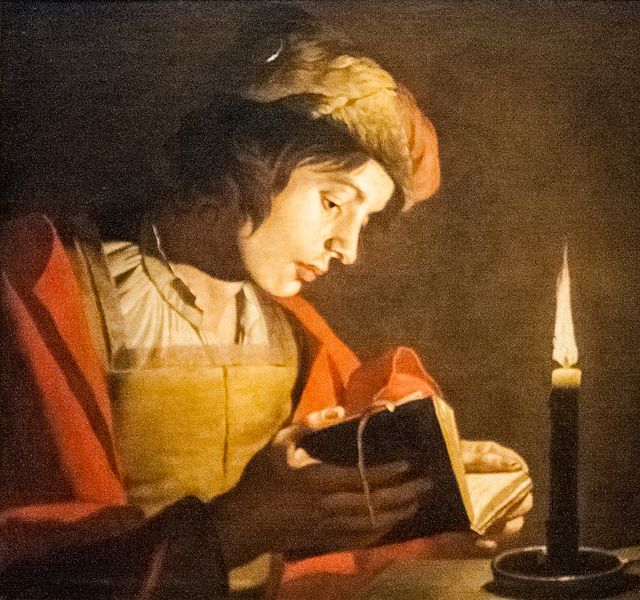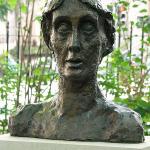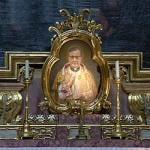A few days ago The Guardian published a piece by Erin Spampinato that got me thinking.
In “How Does the Literary Canon Reinforce the Logic of the Incel?” Spampinato writes that:
The incel isn’t just a monstrous birth of our casually cruel and anonymous internet culture. He is also a product of anglo-American literary culture, which (particularly in the 20th century) treats the topic of male sexual frustration as if it is of prime importance to us all.
I don’t disagree with this statement. I’ve argued before that much of the Western literary canon rests on certain preconceptions about masculine identity, one of which has to do with entitlement to women. This means not only sexual entitlement, but also political and economic entitlement – even the privilege to define what women are. In this tradition it’s a given that the masculine is the active principle, while the feminine is the passive. This is even enshrined in Aristotelian natural science, and carried on into Thomistic theology, where it still lingers like a bad odor today.
But I don’t entirely agree with Spampinato’s piece.
First, there’s the fact that “the Western canon” is not a monolithic entity, but is rather polyphonic, diverse, and fluid. This is the case in spite of, not because of, its locus in the realm of white male privilege. Art resists limitations and authority, so even in cultures where everything militates against the allowance of class, race, or gender diversity…it still creeps in.
So, yes, we have Aristotle with his archaic sexist science – but we also get the voice of Diotima breaking in on the sausage party of Plato’s Symposium. Sappho was regarded as the finest of all Greek lyric poets: the “tenth muse,” they called her. In the Bible unruly women make their voices heard, in spite of the clamor of masculine militarism and rape culture. In spite of a white European retrospective, the New Testament is a story of diverse non-white middle eastern persons experiencing the divine in the midst of imperial oppression.
Later we have women mystics like Teresa of Avila, and the outrageous Trobaritzes, the women troubadors, who upended the sexual double standard. And as time passes more and more diverse voices are heard, so that by the time we reach the 19th and 20th centuries, women must be listed among the Great Writers of the time – even before they gained anything remotely like true political equality. And in spite of centuries of racial oppression, injustice, and prejudice, the voices of non-whites begin to be heard in western society.
For those who get all ecstatic at the idea of TRADITION, I should point out that these emerging non-male, non-white voices are not emerging outside the tradition, but as a part of it. According to T.S. Eliot, white male snob extraordinaire, new additions to the tradition aren’t just tacked on like external do-dads. They enter into and alter the whole shape of the tradition itself. The Odyssey is different because Orlando exists. The Divine Comedy is changed by Beloved.
So, in short, if you are reading The Canon and neglecting non-male, or non-white voices, you not only are missing huge chunks of The Canon, you won’t really be properly understanding those chunks you are.
And then there’s bad reading.
It takes a very naive reader to assume that all these male authors truly believe their own bullshit. In fact, plenty of them set up the bullshit in order to deconstruct it. Yes, some of the authors Spampinato lists are snout-deep in their own masculine fantasy-feces (John Updike, D.H. Lawrence) – but some of them only set it forth in order to reveal it for what it is. Shakespeare exposes Hamlet’s masculine revenge-narrative as essentially self-destructive, and politically futile. Fitzgerald explodes the Chivalric Myth in The Great Gatsby.
In Lolita, for instance, the point of the story is not to celebrate naughty Hum’s wicked but delectatious dalliance with his twelve-year-old stepdaughter. That’s what HUMBERT wants you to think it is, but by the end of the story he isn’t even convincing himself anymore, and tries to twist the pathos of the reader into feeling deeply for him because he is redeemed. But what NABOKOV wants you to see is your own willingness to believe a suave, educated, white European male when he says “she seduced me.”
And readers do. That’s why there’s so much criticism on Lolita that focuses on it as a “dirty book” instead of a “troubling book.” Nabokov made his point too well. Or, perhaps we could say, his male readers made his point for him, by totally buying into it.
When I used to teach Lolita, occasionally a student would tell me that one of her other professors had heard what we were reading, and was scandalized. Not because the potentially triggering material, mind you, but because the book is too “sexy.” Because it gives one “images I didn’t want to have.”
Too many white male profs automatically just side with Humbert, and then perhaps feel guilty about it, and presume that Lolita must be a “bad book” because they felt “bad things” while reading it.
And this brings me to my final point. If readers are coming away from the Western canon with an idea that male sexual desire is super-duper important and that a man’s frustrated urges are the stuff of divine poetry, they are reading badly. And in many cases, I suspect teachers may be at fault. How many professors at the kind of schools that emphasize the canon are willing to look at the canon as it’s been shaped by voices from the margins? How many are willing to deconstruct the fantasies?
Having spent many years at such schools, both as student and teacher, I can say that a) my best professors always did. But b) but the vast majority of them do not. You get these guys teaching Dante and actually believing him about Beatrice. When I taught The Divine Comedy, I had several students report that in other classes, professors were telling them to read the whole thing as a true story, even as revealed truth, and never to question Dante’s love for Beatrice – or even her love for him.
Even though they never spoke in life. Even though Dante was married to another woman.
This is not to say that The Divine Comedy is not a great and stunning work. But it has its flaws, which good readers need to be able to address, without fear of punishment from instructors who have appointed themselves watchdogs of the Canon, as though it were a bristling fortress (yes, the phallic imagery is intentional), instead of careful gardeners tending its growth. The Divine Comedy becomes much more complex and interesting when one regards the poetic process by means of which Dante both justified and questioned his own adulterous fantasy, and the extent to which by the end he himself – poet-Dante, not just pilgrim-Dante – might have been changed. It’s fascinating when you look at the historical context that excused much of his behavior. It’s especially fascinating when you wonder what Beatrice might have had to say about it all, in real life. Or what his wife, Gemma Donati, was thinking as he wandered through Italy in exile, residing with aristocratic women benefactors, refusing to come home to his family since it meant giving up his political pride.
A good reader looks for clay amidst the gold.
For the cracks in the golden bowl. For irony and nuance, hints and presuppositions. She questions the narrator, works to find out what degree of trust is possible in their relationship, distinguishes between different voices, grasps intention, makes allowances for historical context, looks at the development of meaning. A good teacher helps the reader to do this. A good reader should come away from The Divine Comedy questioning the assumptions made by the poet, and emerge from an engagement with Lolita horrified by the extent to which our culture privileges male sexuality.
Good books and good teachers can help a young person to develop a genuinely magnanimous character: generous, empathetic, imaginative, unresentful. But a good book in the hands of a bad reader, under the guidance of a bad teacher, can apparently produce monsters.
image credit: commons.wikimedia.org/wiki/File:Stom_-_A_Young_Man_Reading_at_Candlelight_reversed.jpg













